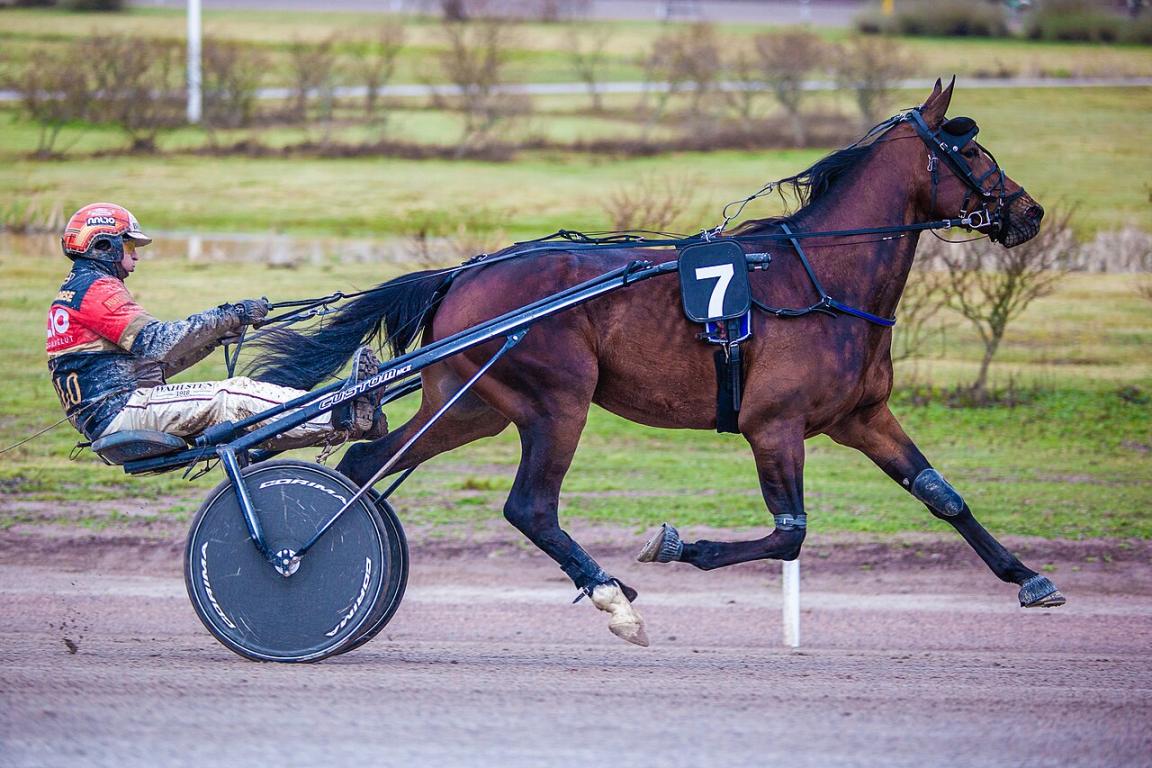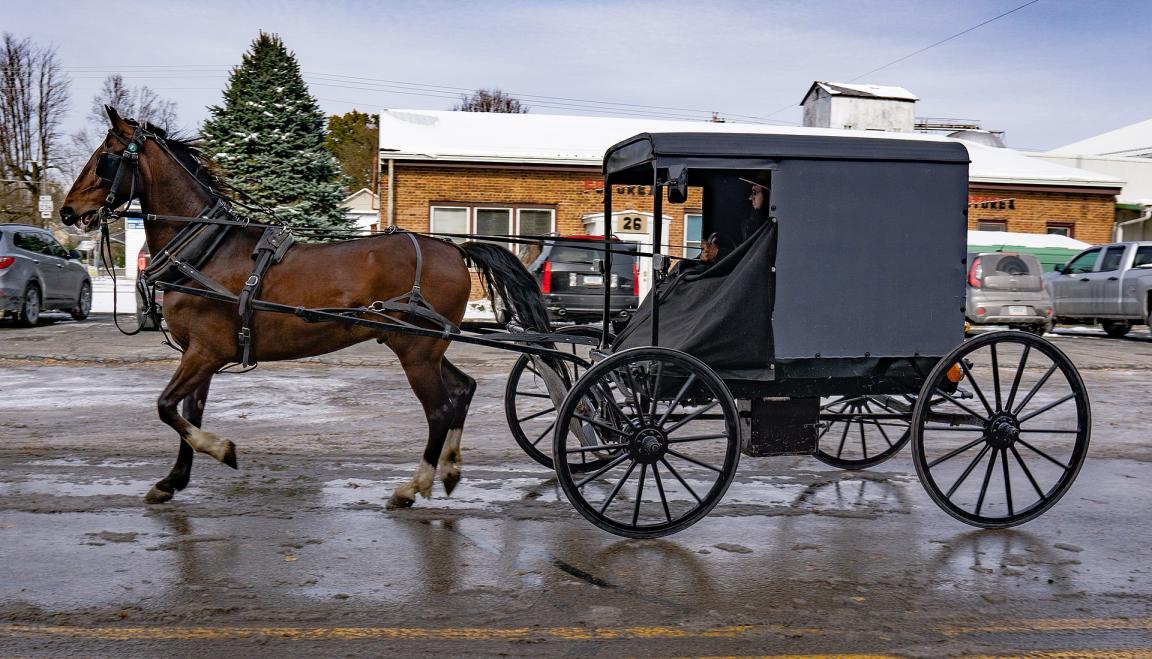
Continent: America
Country: United States
Weight: 400 – 550 kg
Height: 150 – 170 cm



The Standardbred, or American trotter, is a horse breed developed in the United States during the 19th century.
It descends from crosses between the Thoroughbred, the British Norfolk Trotter, the Canadian Pacer, and various European saddle and work horses.
The breed owes much to the stallion Messenger, a Thoroughbred imported from England in 1788, and to his great-grandson Hambletonian 10 (1849–1876), considered the founding sire of the Standardbred.
The name “Standardbred” refers to the speed standard required for studbook registration: at the trot or pace, the horse had to cover 1 mile (1,609 m) in less than 2 minutes 30 seconds.
Thanks to this rigorous selection, the Standardbred became the fastest harness racing horse in the world, used today in harness racing competitions (trotting and pacing) in the United States, Canada, Europe, and Australia.
The Standardbred was born and remains widely bred in the United States, particularly in regions where harness racing is popular:
The Standardbred is very present in Canada, especially in Ontario and Quebec, where harness racing is a popular sport. The country counts many breeders and prestigious races, contributing to the breed’s international reputation.
The Standardbred was massively imported into Europe from the 19th century to improve local trotters:
In Oceania, the Standardbred has become the dominant breed for pacing races. Australia and New Zealand are now among the largest producers and users of Standardbreds in this discipline.
Today, the Standardbred is a cosmopolitan breed, present wherever harness racing is organized:
The Standardbred is one of the most influential horse breeds in the field of harness racing. Thanks to its emblematic ancestor Hambletonian 10, almost all modern Standardbreds descend from this lineage. This makes the breed highly genetically homogeneous and of universal impact in trotting horse selection.
The Standardbred was selected based on a single performance criterion: the ability to cover 1 mile within a standard time (2:30, later improved). This selection fixed genes linked to consistent speed, stamina, and a specific gait (trot or pace).
Although primarily restricted to its own studbook, the Standardbred has influenced:
Today, the Standardbred is the world reference for all trotting and pacing races. Its genetic importance is crucial to:
The history of the Standardbred begins with the importation of the Thoroughbred stallion Messenger in 1788 to the United States. Though a racehorse, Messenger passed on a natural aptitude for fast trotting to his offspring. His lines spread in the Northeast, especially in New York State.
The true founder of the breed is Hambletonian 10 (1849–1876), Messenger’s great-grandson. Based in New York State, this stallion sired over 1,300 foals, most of whom excelled at trotting.
In 1879, the National Association of Trotting Horse Breeders established the first registry with a simple rule: any horse able to trot or pace 1 mile in less than 2:30 could be entered.
During the 19th century, harness racing became extremely popular in the US and Canada.
In 1939, the foundation of the United States Trotting Association (USTA) gave the studbook and racing a formal structure.
Over time, records dropped significantly:
Selection intensified with timed testing, artificial insemination, and the global distribution of elite stallion semen.
Today, the Standardbred is an icon of international horse racing. Its races draw crowds in the US, Canada, Australia, New Zealand, and Scandinavia. Its history, tied to modern racetracks, makes it one of the most specialized and high-performing breeds in the world.
The Standardbred is known for its docile and reliable character. Unlike the Thoroughbred used for flat racing, it is generally more composed and easy to handle, which facilitates training and post-racing retraining.
Selected for speed and endurance at the trot or pace, the Standardbred is energetic but disciplined. It channels its energy into work, showing great willingness and physical stamina.
It is a sociable horse, doing well in groups and usually getting along easily with others. Its balanced nature also makes it a pleasant companion for leisure riding and disciplines such as shows or trail riding.
The Standardbred is reputed for its robustness and sporting longevity. Many continue second careers in leisure driving or riding well beyond their competitive years, sometimes up to 25 years or more.
“The Standardbred is a trotting racehorse that is both fast and enduring, yet gentle, reliable, and capable of becoming an excellent versatile companion after its sporting career.”
The Standardbred will likely remain a specialized harness racing breed. Its future is closely tied to the popularity of these sports in the US, Canada, Europe, and Oceania.
Breeding programs continue to emphasize:
This genetic specialization reinforces its status as the fastest harness racing horse.
Though bred for racing, the Standardbred has an increasing second career:
These reorientations ensure a sustainable career path once racing days are over.
With the globalization of racing and genetic circulation through artificial insemination, the Standardbred is expected to maintain a central place in international breeding. Major American lines are already present in European and Oceanian studbooks, ensuring long-term genetic continuity.
The Standardbred is known as a solid and resilient horse, able to withstand heavy workloads and intense competition. Rigorous selection on performance preserved its strong physical constitution and above-average sporting longevity.
Due to intensive racing use, the Standardbred may be exposed to specific problems:
The breed shows no known disqualifying genetic disease, but certain points require monitoring:
With proper care, the Standardbred can live 25–30 years, often in good health. A well-managed racing career followed by retraining into leisure driving or trail riding allows it to remain active and useful for a long time.
The trot is a symmetrical two-beat diagonal gait: diagonally opposite limbs move together (right fore + left hind, then left fore + right hind). In the Standardbred, the trot is particularly regular, fast, and sustained, allowing the horse to cover 1 mile at very high speed without breaking gait.
The pace is a lateral two-beat gait, where the limbs on the same side move forward simultaneously (right fore and hind, then left fore and hind). This gait, natural in some Standardbreds, is faster than the trot and produces spectacular races.
Born on 05/05/1849
Founding sire of the modern Standardbred, he produced over 1,300 foals and is the origin of almost all current bloodlines.
Born on 03/30/1977
Considered one of the greatest Standardbreds in history, undefeated in 13 races at age 2, winner of the Triple Crown of pacing in 1980, and set the mile record at 1:49.1.
Born on 05/25/2005
Legendary Canadian pacer, he won 20 out of 21 races, broke several world records, and became an influential breeding stallion.
Born on 04/29/1896
Icon of American trotting races, he set a mile record of 1:55 in 1906, which remained unbeaten for decades. A legendary horse, he became a national star.